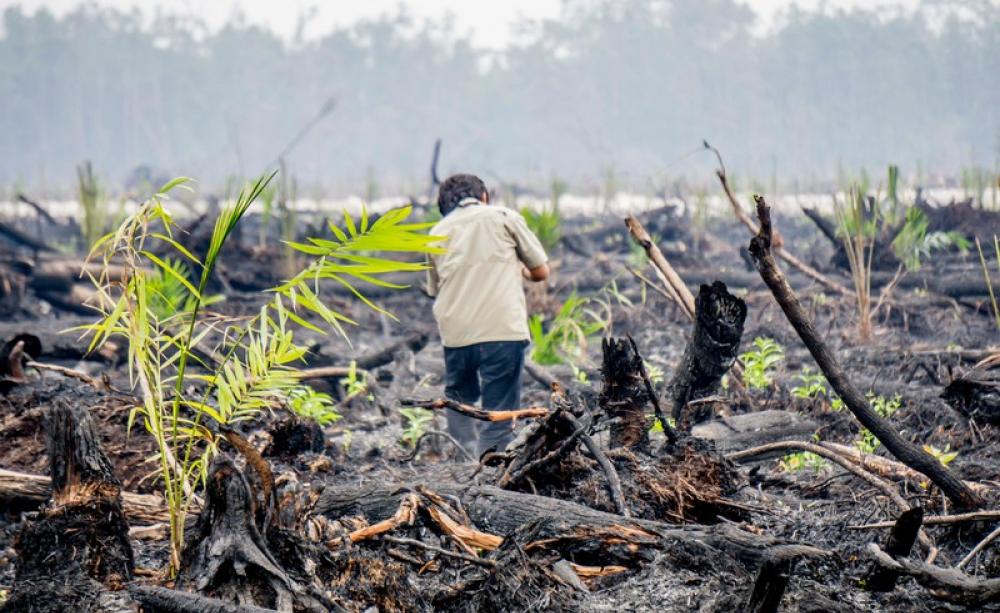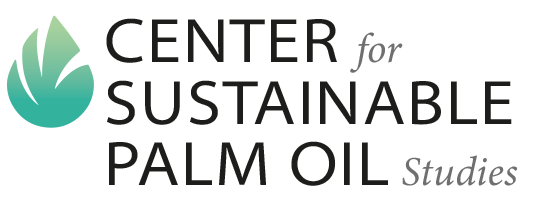Industrial expansion has resulted in the loss of some 420 million hectares of forest overall since 1990, and the decrease of old-growth primary forest worldwide by over 80 million hectares.

The Covid-19 pandemic did not come out of the blue. It was a symptom of the fundamental structures of industrial civilization, and it is an early warning signal for how this civilization is rapidly eroding the very conditions of its own existence.
Over the last decade, environmental scientists have warned that human activities are increasingly at risk of the breaching planetary boundaries that define the environmental limits in which humanity can safely operate.
As industrial civilisation increasingly encroaches on natural ecosystems, we are reducing this ‘safe operating space’ for human survival.
Impasse
Deforestation is one of the most intractable and yet most potent drivers of environmental crisis. It is also among the four out of nine planetary boundaries that civilisation was already at high risk of crossing five years ago according to research published in the journal Science.
Other boundaries we were on the brink of breaching at that time included the rate at which species were going extinct, levels of atmospheric carbon dioxide, and the flow of nitrogen and phosphorus into the environment due to industrial agriculture. The further we breach these and other planetary boundaries, the greater the risk of irreversibly driving the Earth into a less hospitable state for humanity.
Five years on, the eruption of the Covid-19 pandemic has exposed the extent to which we are gradually eroding and reducing this ‘safe operating space’ for human survival, a fact that is evident in the structural impasse we now face: allowing the virus to run through the population leads to massive fatality rates, collapsing healthcare systems, and crashing GDP; locking down to suppress the virus results in haemorrhaging demand, the contraction of multiple industrial sectors, and crashing GDP.
Both those scenarios entail mass deaths of vulnerable populations over varying levels of time, whether from disease or other socio-economic impacts. And a business-as-usual trajectory heralds more of the same.
Pandemic
A new report from the United Nations Environment Programme points out that the Covid-19 pandemic is essentially a dry-run for what could be an even worse pandemic. It is part of a rising trend in zoonotic diseases circulating among animal hosts jumping to humans, driven by core processes of industrial expansion which, if they continue, are bound to trigger the next pandemic.
The pandemic has thus pushed human civilisation into a state of retreat, as part of a much wider complex of expanding industrial processes.
Despite this, most governments, policymakers and business leaders do not understand the scale of the crisis or its true nature. They are clamouring for a return to business-as-usual to simply get economies moving again – with little reflection on how this would only reinforce the behaviours that got us into this intractable mess in the first place.
As the global combination of societal disruption, strained healthcare infrastructures, lockdowns and social distancing have strained normal economic activity, this has put as at risk of ditching seemingly costly environmental commitments. Amidst such pressures, it is no surprise to see that deforestation driven by logging activity has accelerated in Brazil, Colombia, Cambodia, Indonesia, Nepal and Madagascar during the Covid-19 pandemic – partly due to reduced environmental monitoring by authorities and harsh economic consequences amidst lockdown regimes.
In the context of the pandemic, does the challenge of deforestation represent industrial civilisation’s breaching of a key planetary land-system boundary around five years ago? This question is particularly pertinent given that even while enduring one of its dire consequences in the form of the Covid-19 pandemic, progress in addressing deforestation is at risk of reversing – exactly when we need to be immediately putting an end to deforestation once and for all.
Fire drill
According to Professor Kees van Veen, scientific director of the Sustainable Society programme at the University of Groningen in the Netherlands, the pandemic can be understood as “another expression of the fact that humanity pushes the planetary boundaries. The growing world population increases the chances that someone somewhere will be affected with a new and dangerous virus.
“These chances increase due to the fact that humanity exposes itself more and more to different virus ‘habitats’ by penetrating the biosphere deeper and deeper. Combined with our very efficient and global transportation networks between densely populated urban areas, viruses can spread very quickly and new accidents are waiting to happen.”
Yet Covid-19 is not simply a dry-run for the next pandemic – it is also, as executive director of the UN Global Compact Lise Kingo has said, a ‘fire drill’ for climate catastrophe. Deforestation is among the top drivers of global heating, contributing nearly a tenth of all carbon dioxide (CO2) emissions due to tree cover loss from tropical forests. This is so large that if tropical deforestation were a country, it would rank a third in global CO2 emissions behind China and the United States.
The Covid-19 pandemic thus offers us a moment of awakening. We have arrived at an inflection point for the human species. The world needs new global approaches to tackle deforestation to not only avert the next pandemic, but to avert climate catastrophe, along with other forms of biodiversity collapse and ecological crisis.
If we fail to do this, we face an intensifying perfect storm of ecologically-linked catastrophes that will increasingly erode the ‘safe operating space’ for human survival. That process of erosion as we breach planetary boundaries has already begun. We need to bring it to an end, right now.
Collapse
The problem of deforestation provides a powerful window into how intractable the processes of environmental destruction really are. These processes are baked into the core structures of production and consumption that sustain industrial civilisation as we know it.
In 2013, the UN’s Intergovernmental Panel on Climate Change (IPCC) assessed that deforestation was responsible for up to 10 percent of human-induced carbon dioxide emissions. But when taking into account forest degradation – negative impacts on a forest’s structure or function which do not decrease its area size – as well CO2 emissions tropical peatlands, this figure rises to 15 percent.
Satellite data for the period 2003-14 shows that tropical forests have now ceased to act as carbon ‘sinks’, because they emit more carbon than they capture due to deforestation and degradation.
Deforestation also exacerbates heating at local scales within tropical ecosystems. A recent study in Environment Research Letters “found local warming larger than that predicted from more than a century of climate change under a worst-case emissions scenario.”
The larger the patches of deforestation, the more “extreme” are the local warming impacts. As a result, “the combined effects of deforestation and climate change on tropical temperatures present a uniquely difficult challenge to the long term public health, occupational safety, and economic security of tropical populations.”
Consumption
But deforestation also endangers critical planetary ecosystems in more direct ways – ways which, if undermined, in themselves could endanger the ‘safe operating space’ for humanity.
Before the development of human civilisations, the Earth was covered by 60 million square kilometres of forest. As deforestation has accelerated due to the human footprint on the planet, there are now less than 40 million square kilometres of forest remaining.
In May, a shocking new study published in Nature Scientific Reports, by physicists Dr Gerardo Aquino of the Alan Turing Institute in London and Professor Mauro Bologna of the University of Tarapacá’s Department of Electronic Engineering, came to a stark conclusion based on examining this dynamic.
Their study in particular modelled human-forest interactions over the last few decades, along with its potential impact on the viability of human civilisation. Their findings were alarming: “Calculations show that, maintaining the actual rate of population growth and resource consumption, in particular forest consumption, we have a few decades left before an irreversible collapse of our civilisation.”
Tracking the current rate of resource consumption against the rate of deforestation, the authors found that “statistically the probability to survive without facing a catastrophic collapse, is very low.” At the current rate of deforestation, they projected that all the world’s forests would disappear within approximately 100-200 years.
As forests provide critical services to the life-support systems necessary for human survival on the planet – including carbon storage, oxygen production, soil conservation, water cycle regulation, support for natural and human food systems, and homes for countless species – “it is highly unlikely to imagine the survival of many species, including ours, on Earth without them.”
Catastrophic
On that scenario, human civilisation would begin to collapse long before the terminal point for planetary-scale forest destruction, potentially well within the next two to four decades.
The study authors wrote: “In conclusion our model shows that a catastrophic collapse in human population, due to resource consumption, is the most likely scenario of the dynamical evolution based on current parameters.
“Adopting a combined deterministic and stochastic model we conclude from a statistical point of view that the probability that our civilisation survives itself is less than 10 percent in the most optimistic scenario. Calculations show that, maintaining the actual rate of population growth and resource consumption, in particular forest consumption, we have a few decades left before an irreversible collapse of our civilisation.”
This verdict would seem to indicate that there is an over 90 percent probability of a collapse of industrial civilisation due to deforestation alone – this is extraordinarily high.
Industry
Since 1990, industrial expansion has resulted in the loss of some 420 million hectares of forest overall, and the decrease of old-growth primary forest worldwide by over 80 million hectares.
The main driver of deforestation and forest degradation is agricultural expansion, in particular large-scale commercial agriculture – which is responsible for some 80 percent of global deforestation. Between 2000 and 2010, the latter types of agriculture accounted for some 40 percent of tropical deforestation, and local subsistence agriculture for another 33 percent.
Of the world’s major political institutions, the European Union has perhaps been at the forefront of developing new legislative and policy approaches to tackling deforestation. But there are strong grounds to suspect that these approaches are not fit for purpose – and may well even deepen the challenge.
A new study by the EU Commission in February found that the agricultural expansion behind deforestation is driven by growing demand for key products – like soy, beef and vegetable oils such as palm oil, rapeseed and sunflower. And while the production of such commodities often takes place in developing countries in South America, West Africa and Southeast Asia, the reality is that much of the impetus for the production comes from Western consumers: approximately a third of globally-traded agricultural products linked to deforestation were consumed by European countries between 1990 and 2008.
Thus, deforestation is not just a problem outside the West. New research published in July in the journal Nature Research showed that deforestation rates in EU forests are picking up steam. Forests account for some 38 percent of the EU’s land surface area. They are harvested regularly for timber production.
But between 2016 and 2018, the loss of biomass due to harvesting increased by 69 percent, compared with the period from 2011 to 2015. The area of forest harvested also increased by 49 percent over these time-scales.
Palm oil
The study attributed this upsurge in European deforestation to increased demand for wood for timber and as a fuel, among other wood products.
The “abrupt increase” in deforestation poses a serious threat to the EU meeting its climate mitigation targets: “If such a high rate of forest harvest continues, the post-2020 EU vision of forest-based climate mitigation may be hampered, and the additional carbon losses from forests would require extra emission reductions in other sectors in order to reach climate neutrality by 2050.”
Yet in its recent efforts to address deforestation since 2015, the EU’s overwhelming focus has been not on its own direct complicity in deforestation, but rather on the role of external commodities.
In fact, the commodity that comes in for the most trenchant criticism – as reflected in the most recent draft EU legal framework to stop deforestation – is palm oil. The proposed draft framework builds on the EU’s already existing approach: in 2019, the EU decided to cease categorising palm oil for biodiesel as a renewable energy product, and began implementing a planned phase-out.
Palm oil has undoubtedly been one of the major drivers of deforestation, particularly in parts of Southeast Asia. The region has experienced the highest rate of deforestation of any major tropical region, losing 1.2 percent of forest annually, compared to Latin America (0.8 per cent) and Africa (0.7 per cent). At this rate, Southeast Asia will lose three-quarters of its forests and 42 percent of its biodiversity by the end of this century.
Beef
While a major driver, palm oil is not in fact the biggest driver of deforestation.
In 2019, I reported on a major new study in the Global Environmental Change journal which found that between 2010 and 2014, beef and oilseed production accounted for over half of carbon emissions from tropical deforestation. The study also quantified precisely which products were more responsible for deforestation than others.
It concluded that the biggest global driver of carbon emissions induced by deforestation is beef production in Brazil, the rest of Latin America, and Africa, accounting for some 34 percent of emissions. The next major driver is from oilseeds products such as vegetable oils, at around 20 percent.
The study was able to disaggregate responsibility for emissions in another way. Latin America overall bears the bulk of responsibility, accounting for just under a third of deforestation-linked carbon emissions, with Brazil alone driving a fifth of emissions. Overall, palm oil produced in the Asia-Pacific accounted for 14 per cent – a substantial amount, but still less than half of the former.
It is also worth noting that by far the biggest culprit in Asia is Indonesia – one of the world’s biggest palm oil producers – accounting for ten percent of deforestation emissions. The other main palm oil Asian producer of course is Malaysia, which would fit within the remaining four percent of emissions.
Policy
This analysis builds on previous data. In 2013, a report by the European Commission found that between 1990 and 2008, “large imports of soybean products mainly from South America” accounted “for roughly 82 percent of deforestation attributed to the import of oil crops” into the EU. This contrasted with “palm oil imports from Southeast Asia, which contributed about 17 percent of deforestation associated with EU27 oil crops imports, imported primarily from Indonesia and Malaysia.”
Armed with this data, we are equipped to realise that the EU’s attempt to tackle deforestation through a de facto ban on palm oil for biofuels, while largely neglecting strong legislative and policy action to address rocketing beef and soy consumption, makes little environmental sense.
Indeed, a new study in July revealed that around half of Brazil’s beef exports and nearly a quarter of its soy exports to the EU could be from zones which were illegally deforested in the Amazon and Cerrado. The EU is thus directly complicit in the biggest drivers of deforestation, yet has done next to nothing to address this.
But the available scientific evidence suggests that the prevalent approach to stopping deforestation – focused largely on the strategy of boycotting particular commodities – is unlikely to work. In part 2 of this series, I explore more effective policy responses.
Ending deforestation will require not just looking at legislation to compel ‘Others’ out there to change course while we relentlessly accelerate our own path of endless growth. It will means, therefore, scaling back our complicity in the fundamental drivers of the endless growth machine.
This Author
Dr Nafeez Ahmed is an award-winning environment journalist. He currently writes for VICE on system change, and formerly reported on the geopolitics of the environment via the ‘Earth Insight’ blog at The Guardian. He is executive director of the System Shift Lab and a research fellow at the Schumacher Institute for Sustainable Systems. He is the author of A User’s Guide to the Crisis of Civilisation: And How to Save it (2010) and Failing States, Collapsing Systems: BioPhysical Triggers of Political Violence (2017).
Original link: https://theecologist.org/2020/jul/30/towards-great-forest-transition-part-1


